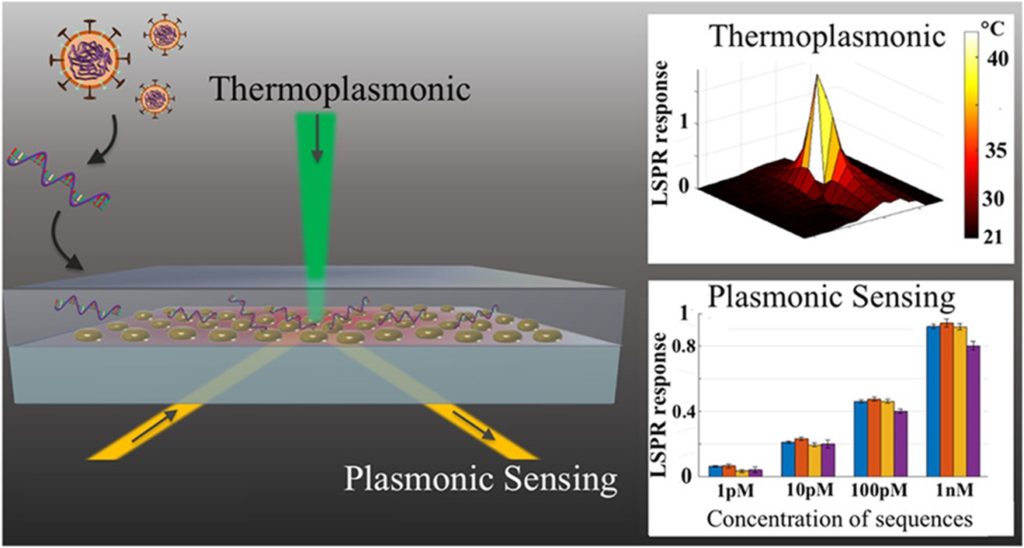Biosensors for COVID -19 Detection

Biosensor for Infectious Diseases Detect the Presence of Chemicals by Using a Living Organism or Biological Molecules
Infectious diseases are disorders caused by various groups of organisms, such as bacteria, viruses, fungi, or parasites. Probiotics and different types of organisms live in and out of the body; they are used by the body to perform various functions like digestion- they do not cause any disease typically; however, under certain conditions, some organisms may cause infections.
Infectious diseases can be transmitted from person to person; this means that an infected individual can pass the infection to other individuals through the contact of blood, saliva, and many different possible ways. Insects or other animals pass some diseases. Consumption of contaminated food, water, and exposure of harmful organisms like viruses and bacteria to the body can also cause infectious diseases.
Infections are widely spread through contact, most of the infectious diseases have their different incubation period, sign, and symptoms, but some infections are hazardous since they do not exhibit any particular manifestation of the disease. Some have prevalent symptoms like flu and diarrhea, which can be ignored by the patients due to a lack of knowledge.
Many infectious diseases like measles and chickenpox are readily treatable by medications and vaccination, where over time of a particular infection may be fetal. It may also lead to some severe health conditions including SARS (severe acute respiratory syndrome), influenza, the common cold, tuberculosis (TB), Hepatitis A and B.
Artificial intelligence for infectious diseases
Artificial intelligence technologies like biosensors are highly significant for the medical field. Biosensors are the analytical devices that detect the presence of chemicals by using a living organism or biological molecules, especially enzymes or antibodies. They convert a biological response into an electrical signal.
The biosensor has solidified its effect in a few fields, including clinical applications, because of points of interest, for example, high selectivity and affectability, the potential for scaling down, transportability, minimal effort, and quick results.
Prediction of infection-path
AI works as a path indicator-indicates forecast of contamination way. It is used to predict the cause and possibilities of epidemic spread and what factors will help to reduce the risk. It also analyzes the effect of potential vaccine performed in each case.
It deals with the examination of how well the preventing factors are working and what will be the next step. Techniques like few-shot learning and transfer learning may be used to train AI models to search for pandemics.
AI as a demonstrative instrument
Machine learning-based technologies help to investigate or diagnose the infection. It exhibits the possibility of acquiring a certain kind of disease. Early detection of the development of the infection stimulates the response and recovery rate.
It helps in quick diagnosis as the medical procedure may take a long period to identify the infection- this allows doctors to treat the patient with developing risk factors; hence Al plays a vital role in infectious diagnosis.
AI as an early notice framework
Artificial intelligence technologies can predict the possibilities of the infection spread from one place to another, from human to human or from animal to human. Health care business uses different types of artificial intelligence technologies to track infectious disease outbreaks globally.
It can also help epidemiologists to categories and recognize outbreaks to take possible measures for the prevention of the spread.
AI identification advances for tracking
The advanced technology of artificial intelligence helps to tract the infection. It utilizes various techniques to detect the track and reason for the pandemic. Many viral infectious diseases like COVID-19 do not show any symptoms-over time infection can cause respiratory illness, ultimately leads to death. The advanced technology helps to track the condition to reduce the spread and to take prevention actions like social distancing and healthy eating.
AI as a power multiplier
AL technology can help and support medical decision-making methods and treatments; it enhances the possible treatment of the infection by analyzing the effect of different medicines, food, and environmental conditions on the patient.
Some health departments are using image analytics like chest CT scans and Remote TV robots that help in rapid and early diagnosis infections related conditions to provide better handling and to reduce physical contact.
AI as infection manager
The advanced techniques and data management platforms aid the management of the infection spread and control AI strategies will empower investigation of gigantic irresistible ailment and reconnaissance information adequately to help government offices, social insurance specialist co-ops, and clinical experts to respond to infection in the future.
Conclusion
Ongoing advances in biotechnology and biomarkers disclosure are currently explaining the subtleties of numerous organic procedures in health and infection, featuring new focuses for finding and therapeutics. This is particularly significant on account of irresistible sicknesses since the quantity of anticipated passing stays high, with dangers of plagues and pandemics, developing and reappearing maladies, and pathogen protection from anti-infection agents. Hence, the accessibility of robust finding strategies is essential.


